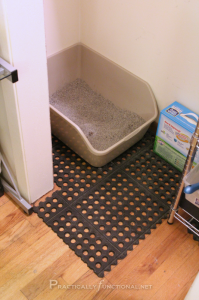 Have you thought about adding a second cat or even a kitten to the current household thinking your cat would love a friend to keep them company while you are at work, or just fallen for a kitten? Did you think you would just bring the new feline in the home, and have them work it out? Well unfortunately that does not always work out and the only thing it does is cause cat fights. Some cats are perfectly happy to have a friend around while others need a reason to like this new cat. The resident cat thinks that there is some strange new feline in the house possibly to replace them. While the new feline was brought into a foreign territory in a potential battle field as everything smells like the resident cat. It can be a very scary time for them both.
Have you thought about adding a second cat or even a kitten to the current household thinking your cat would love a friend to keep them company while you are at work, or just fallen for a kitten? Did you think you would just bring the new feline in the home, and have them work it out? Well unfortunately that does not always work out and the only thing it does is cause cat fights. Some cats are perfectly happy to have a friend around while others need a reason to like this new cat. The resident cat thinks that there is some strange new feline in the house possibly to replace them. While the new feline was brought into a foreign territory in a potential battle field as everything smells like the resident cat. It can be a very scary time for them both.
Here are some great steps to ensure a calm peaceful household when introducing a new cat:
- Prepare separate spaces. Before bringing home the new feline have a separate room all prepared for them. This includes having a scratching post, litter boxes, toys, and food dishes for the new feline. This room could be a spare bedroom or bathroom.
- Introduce smell first. Cats making eye contact with each other first time can quickly escalate to a full on fight. This is why you want to introduce smell first. A good way for scent exchange is to either rub a towel all over each cat, and placing them into each of their areas or you can also do this with fresh socks. If you like you can also take the socks/towels that have each cats scent, and spray feliway on them. Don’t be alarmed if they hiss or growl. These are normal reactions.
- Encourage good reaction through the door. Place the cats food closer and closer to the door, each time finding the challenge line and spending a day or two on that line. (The challenge line is the closest either cat will be without hissing or being scared and running away). Give your cat treats at the door, play with them near the door. Basically the goal is to associate the other felines scent with good things.
- Let the new kitty roam! Place your resident cat in a closed room and let the new feline explore their surroundings at a good pace. Let the new feline stretch their legs, then place them back into their safe haven. All without having them meet the resident cat. Then release the kracken, we mean resident cat. The cat will smell the new feline and will start to get used to the others scent.
- Open the door just a crack. After a few days you can slowly open the door, just a crack for them to see each other. But not enough to stick their heads through. Do this during feeding time. Offer a small amount of food open the door then close the door after a minute or they are done eating. Do this one or two times a day. It’s better to do short sessions that turn out good then one long session that turns out bad. If one cat is a fast eater invest in slow feeders to draw it out longer.
- Open the door fully. Don’t rush this step or else you will have to go back to the closed door peekaboo sessions. You may want to invest in a baby gate at this point. Basically have the door open with the baby gate and feed them in short sessions each day. If the cats aren’t hissing and seem more curious then anything that’s a great sign!
- Let them be together in supervised times only. This may or may not be a slight gong show. But whenever your cat doesn’t hiss at the other feline, praise them and give them a treat. If a fight breaks out or one is very scared, go back a step. You want this to be a good experience for them. Hissing is fine but watch for the following body language to see when a fight might break out:
- Ears go flat
- Fur fluffs up
- Batting of paws
- Spitting
- Yowling
This is when you want to interrupt it. Try distracting with toys, treats, hand claps or placing anything between them. What you want to do is make them lose eye contact.
Helpful tips for cat introductions:
- Go the resident cats pace, not your own. This introduction may take days,
 weeks or even a month or two. They may also never be friends but if they can learn to coexist then all is good.
weeks or even a month or two. They may also never be friends but if they can learn to coexist then all is good. - Don’t have them out not supervised until you know they can be trusted. While you’re at work or out it’s best to keep them separated.
- Ensure you have enough resources. This means a few scratching posts, even cat trees, and that they don’t share the same feeding bowl. Also for litter boxes a rule of thumb is to have one litter box per cat plus one extra. You also want them to be in areas where escape routes are easy to be find and in separate locations. So this means not in a tiny closest, or all downstairs. If a cat gets spooked while in the litter box they may develop a litter box aversion. As well if one cat can guard the area by just being positioned right it’ll prevent another cat from being able to use it.
Some cats may never be besties but as long as they have enough resources you can prevent an all out war. Adding a new feline to the house can be a very wonderful thing but take the time needed to properly introduce them. We assure you, you won’t regret it and you may just have two cats who love each other in the end.


 But a puppy should not be going to its new forever home until at least 8 weeks of age, 12 weeks is preferable. Here are some reasons why:
But a puppy should not be going to its new forever home until at least 8 weeks of age, 12 weeks is preferable. Here are some reasons why:
 at least 8 weeks old. In most states in the US it is illegal to adopt or sell any animals under 8 weeks of age. And in Canada they might be following suit. Good breeders would never ever sell a puppy under 8 weeks of age nor any good rescues. Sadly some feel if they are eating solids then they are ready to go which is not the case. They may be ready physically but mentally they are far too young to cope with the trauma of a whole new life without momma and litter mates. Before you decide to adopt such a young kitten or puppy think if it’s the right thing to do for that puppy or kitten. Waiting a few more weeks to give them the best chance in life will be truly be worth it in the end.
at least 8 weeks old. In most states in the US it is illegal to adopt or sell any animals under 8 weeks of age. And in Canada they might be following suit. Good breeders would never ever sell a puppy under 8 weeks of age nor any good rescues. Sadly some feel if they are eating solids then they are ready to go which is not the case. They may be ready physically but mentally they are far too young to cope with the trauma of a whole new life without momma and litter mates. Before you decide to adopt such a young kitten or puppy think if it’s the right thing to do for that puppy or kitten. Waiting a few more weeks to give them the best chance in life will be truly be worth it in the end.






 I’m not a seasoned dog trainer, so fortunately for you, I won’t be hitting you with a training program and series of cutesy acronyms. But I do study animal behaviour, and having run the dog training gauntlet with an unsocialized dog and a critical eye, I believe I can share a few good kernels of advice.
I’m not a seasoned dog trainer, so fortunately for you, I won’t be hitting you with a training program and series of cutesy acronyms. But I do study animal behaviour, and having run the dog training gauntlet with an unsocialized dog and a critical eye, I believe I can share a few good kernels of advice.






